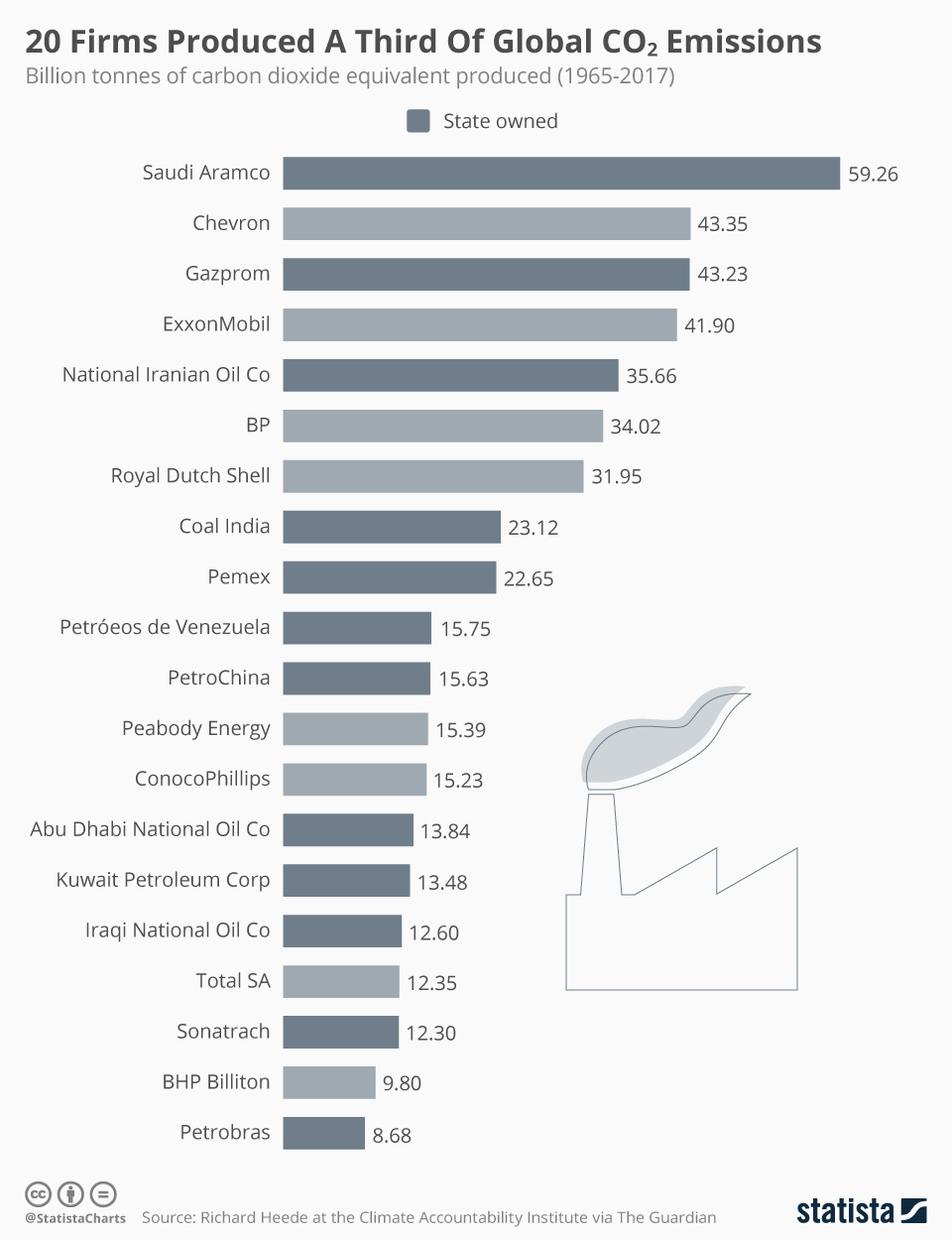Did you know that the average American company has a carbon footprint of 10,000 metric tons per year? And that’s just the United States – the carbon footprint for companies all over the world is over 2 billion metric tons of greenhouse gas emissions every single year!
With numbers like that, it’s no wonder more and more companies are looking for ways to reduce their impact on the environment.
Not only is it good for the planet, but reducing the carbon footprint for companies can also save money.
So how do you go about reducing your company’s carbon footprint?
Table of Contents
How Do Businesses Produce Greenhouse Gases?
Businesses produce greenhouse gases in a number of ways. The most common way is through the burning of fossil fuels such as natural gas, oil, and coal. When these fuels are burned, they release carbon dioxide and other greenhouse gases into the atmosphere.
Another way businesses produce greenhouse gases is through the manufacturing of certain products. For example, the production of cement and steel involves processes that release greenhouse gases into the atmosphere.
Businesses can also impact the environment in other ways that contribute to greenhouse gas emissions. Land clearing for development purposes can release greenhouse gases into the atmosphere.
The good news is that there are a number of things businesses can do to reduce their greenhouse gas emissions.
One way is to switch to cleaner energy sources such as solar and wind power.
Another way is to improve energy efficiency in their operations.
And finally, businesses can offset their emissions by investing in projects that reduce greenhouse gases in the atmosphere.
These are some of the ways businesses produce greenhouse gases. By making some simple changes, businesses can make a big impact in reducing their carbon footprint and helping to protect our environment.
Benefits of Reducing Corporate Carbon Footprint
When it comes to businesses, reducing the carbon footprint for companies can have a big impact – not just on the environment, but also on your bottom line.
There are plenty of reasons to focus on reducing your company’s carbon footprint.
For one, it’s simply the right thing to do. As a business, you have a responsibility to operate in a way that is sustainable and doesn’t damage the environment.
Additionally, reducing your company’s carbon footprint can help you save money. Energy efficiency measures often have a payback period of two years or less, so you can see real financial benefits from making changes.
Of course, reducing your corporate carbon footprint also has reputational benefits. Customers and clients are increasingly interested in working with businesses that share their values, and being eco-friendly is a great way to show that your company is committed to making a positive impact.
There are a number of ways to reduce your company’s carbon footprint.
One easy place to start is by increasing energy efficiency. This can be done in a number of ways, from simple things like turning off lights and computers when they’re not in use, to more significant changes like upgrading to energy-efficient equipment.
Another way to reduce your company’s carbon footprint is to switch to clean energy sources. This can be anything from solar and wind power to using green power from your local utility. Not only is this good for the environment, but it can also help you save money on your energy bills.
Finally, consider offsetting your company’s carbon footprint. This can be done by investing in carbon offsets, which help to fund projects that reduce carbon emissions elsewhere. This is a great way to offset your company’s emissions if you’re not able to reduce them directly.
Reducing your company’s carbon footprint is good for the environment, your bottom line, and your reputation. There are a number of easy ways to get started, so there’s no excuse not to make a change.
Steps on How to Reduce Corporate Carbon Footprint
Most businesses want to be as sustainable as possible, but don’t know where to start when it comes to reducing their carbon footprint.
Here are a few steps your business can take to reduce its impact.
- Use recycled materials whenever possible.
- Encourage employees to carpool, use public transportation, or ride bikes to work.
- Invest in energy-efficient office equipment and appliances.
- Educate employees about conserving energy and water.
- Implement a company-wide recycling program.
- Compost food waste and other organic materials.
- Purchase green power from your utility company.
- Support renewable energy projects in your community.
- Advocate for strong environmental policies at the local, state, and federal levels.
- Partner with other businesses to create a greener supply chain.
If every business took just a few of these steps, it would make a big difference in the fight against climate change.
 (Source)
(Source)
Measuring and Reporting Progress
When it comes to sustainability, it’s important for companies to measure and report their progress. This helps them set goals, track their progress, and improve their practices.
One important way to measure progress is by calculating your company’s carbon footprint. This is the total amount of greenhouse gases that your company emits, either directly or indirectly.
There are a number of ways to calculate your carbon footprint, but one of the most popular methods is the “carbon calculator.” This tool allows you to input your company’s emissions data and calculate your carbon footprint.
Once you know your carbon footprint, you can start working on reducing it.
Reducing your carbon footprint is good for the environment and can also save your company money. So it’s a win-win situation!
Conclusion
In order to calculate the carbon footprint of companies, one has to look at the emissions from all of the company’s operations. This includes emissions from electricity use, transportation, and any other activities that the company is involved in. The emissions can then be multiplied by their corresponding carbon dioxide equivalent factors to get the total carbon footprint.
Another way to calculate the carbon footprint of a company is to look at the emissions from their products and services. This includes emissions from the production, use, and end-of-life of the products and services. The emissions can again be multiplied by their corresponding carbon dioxide equivalent factors to get the total carbon footprint.
The carbon footprint of a company can also be calculated by looking at the emissions from its supply chain. This includes emissions from the production, transportation, and use of the materials and products that the company uses. The emissions can be multiplied by their corresponding carbon dioxide equivalent factors to get the total carbon footprint.
When it comes to reducing the carbon footprint of a company, it is important to consider all of the company’s operations and activities. By doing so, companies can make a significant impact on the environment and the climate.
We at Vitality can help you find the best way to calculate the carbon footprint of your company. We offer a variety of services that can help you save money and energy while reducing your impact on the environment. Contact us today to learn more about how we can help you make a difference!





